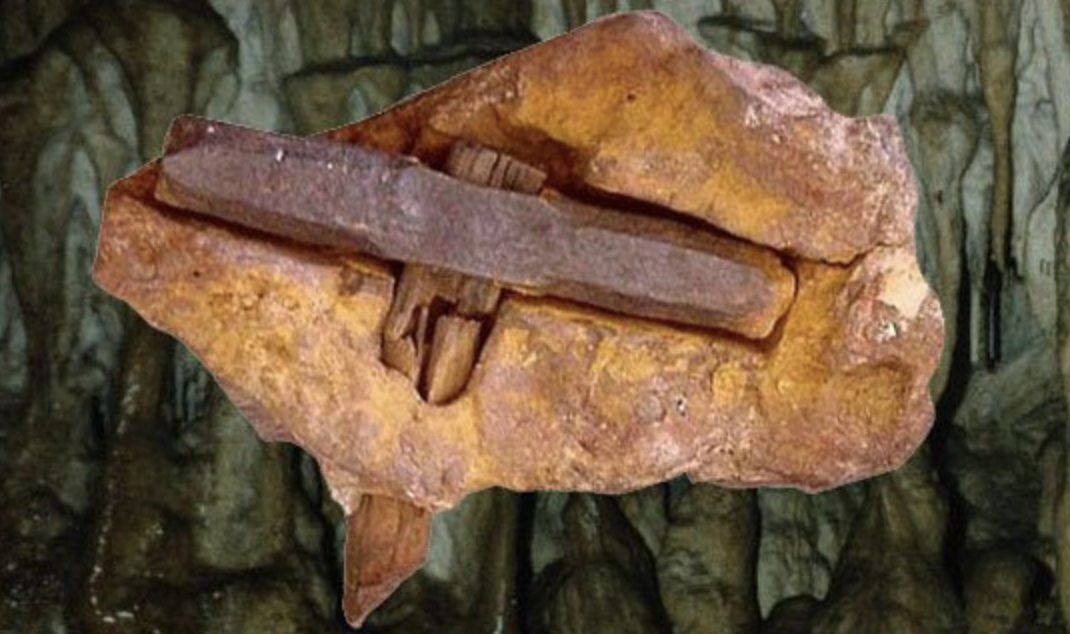Discovered in Texas, in 1936, the London Hammer was embedded in a limy rock concretion originating from the Cretacious rock formation 400 million years ago! The 6-inch-long hammerhead consists of 96.6% iron and has not rusted since its discovery!


The London Hammer, sometimes also called the “London Artifact,” is a name given to a hammer made of iron and wood that was found in London, Texas, in the United States in 1936. Many have claimed that the hammer is actually a 400 million years old artifact.
Discovery of the London Hammer OOPArt
In June 1936, Max Hahn and his wife Emma were on a walk when they noticed a rock with wood protruding from its core. They decided to take the oddity home and later cracked it open with a hammer and a chisel. Ironically, what they found within seemed to be an archaic hammer of sorts.
What strange facts were revealed about the artifact?
A team of archaeologists checked it, and as it turns out, the rock encasing the hammer was dated back more than 400 million years. The hammer itself turned out to be more than 500 million years old. Additionally, a section of the handle has begun the transformation to coal.

The hammer’s head, made of more than 96.6% iron, is far more pure than anything found in nature could have achieved without an assist from modern technology.
Here’s how the London Hammer got a world wide attention
Creationists, of course, were all over this. The Hammer began to attract wider attention after it was bought by creationist Carl Baugh in 1983, who claimed the artifact was a “monumental ‘pre-Flood’ discovery.” Baugh has used it as the basis of speculation of how the atmospheric quality of a pre-flood earth could have encouraged the growth of giants.
Possible rational explanations for the London Hammer OOPArt
Other observers have noted that the hammer is stylistically consistent with typical American tools manufactured in the region in the late 1800s. Its design is consistent with a miner’s hammer.

One possible explanation for the rock containing the artifact is that the highly soluble minerals in the ancient limestone may have formed a concretion around the object, through a common process which often creates similar encrustations around fossils and other nuclei.
The London Hammer is now an exhibit in Baugh’s Creation Evidence Museum, which sells replicas of it to visitors.
Source:mysteriesrunsolved.com








